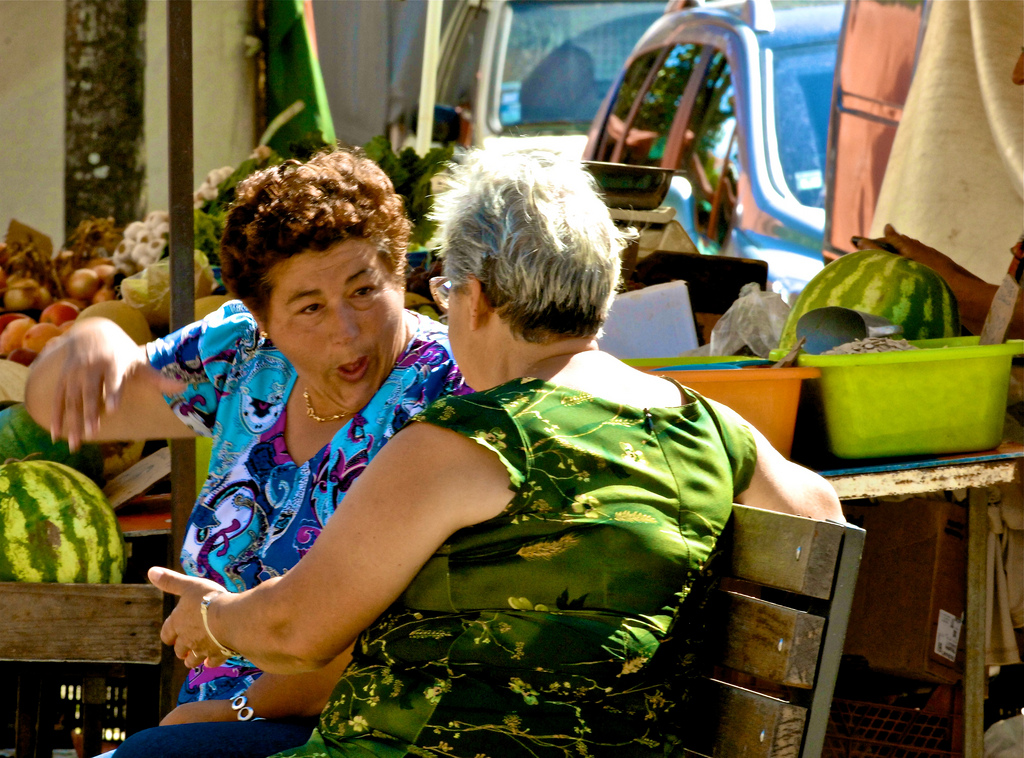Let’s Get Physical! Using Gestures to Learn a Foreign Language Posted by mtaulier on Apr 28, 2014 in Archived Posts
According to experts, human communication is divided into three distinct parts: 55% is attributed to body language, 38% comes from the tone of your voice, and only 7% is based on the words you speak.
What this means is that over half of what we say is determined by our body language, not by our words.
The way you use your body to communicate has a powerful impact on the listener. This is true in any culture and in any language because humans are visual creatures. Imagine you’re visiting a foreign country and you stop a local to ask for directions. If the person simply speaks the directions while keeping their hands in their pockets, would you be able to figure out what they were saying if you didn’t know the language? Now imagine the same person using hand gestures to show you which way to go. Which scenario would be more helpful?
Studies have shown that people often use gestures when trying to communicate in a foreign language. Before learning to speak, children use hand gestures—such as pointing—to communicate with adults. Even patients suffering from dementia or recovering from a stroke will use gestures to relearn or remember words they once knew.
So how can using gestures help you learn a foreign language?
Our brains control both our speech and our physical movements and performing gestures when learning words has been proven to enhance memorization. The best way to begin is to use gestures when learning action words or phrases in a foreign language. For example, if you’re trying to learn the phrase “knock on the door,” perform the action of knocking on a door while saying the phrase out loud. Not only will this help you memorize the phrase more easily, it will create that mind-body connection that will make the phrase harder to forget. You can use both facial expressions and hand gestures to help you memorize common actions like eating, sleeping, crying, laughing and more.
To take this a step further, combine a gesture of the word or phrase you’re trying to learn with a mental image. If “driving a car” is a phrase you want to commit to memory, you can imitate the action of driving by placing your hands on an invisible steering wheel and imagining yourself driving along a road. Even better, use a visual aid such as a physical image so that when you use the word or phrase, you’ll instantly recall the image you saw. Flash cards are great for this technique but using any image you can find that relates to the word or phrase you’re trying to learn will benefit you.
Of course, using gestures or images will not work with every word. There are limits to this system and it is best applied to short action words or phrases. Gestures are not usually used to convey complex sentences so this technique will benefit those just starting to learn a foreign language. And keep in mind that some gestures may be language-specific but once you learn what a word or phrase means, you can connect it to a specific gesture that will help you retain the word.
Using gestures to learn a foreign language is not meant to replace the traditional book or audiotape method but to supplement it. Your brain will develop stronger connections through verbal, mental and physical word association that is sure to accelerate your learning.
Have you used physical gestures to learn a foreign language? Share your tips and tricks in the comments!

Build vocabulary, practice pronunciation, and more with Transparent Language Online. Available anytime, anywhere, on any device.





Comments:
Patrick Hill:
I teach French in a Special Needs School and I use Makaton- already familiar to the students- to help them learn new vocab.
Shannon Risinger:
Have you ever heard of the technique of Total Physical Response? I’ve been teaching languages for 20 years and for beginning classes I’ve seen how vocabulary taught this way “sticks” in the brain. Combine this method with the spaced repetition idea and “Voila!”